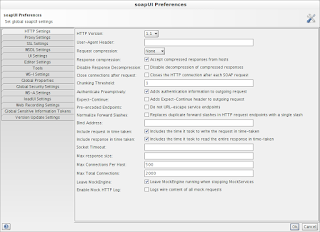WSO2 Carbon-3.2.0 - The latest with many new features and a release to remember
On 12th of June 2011, the latest version of WSO2 SOA middleware platform, WSO2 Carbon-3.2.0 has been released. Since 2009 January, WSO2 SOA middleware platform has been grown and matured and now it consists of 12 different products.
In this latest version, two new members joined into WSO2 Carbon product family. Those are WSO2 Complex Event Processing Server and WSO2 Message Broker.
In this post, I'm not going to explain the new features and enhancements included in each of these products. You can find them out in the respective product pages in wso2.com.
But, I would like to share how we evolve in terms of features, process and release methodology during the last couple of years.
In late 2008, we started the implementation of WSO2 Carbon platform. Before that, we had four isolated products (WSO2 ESB, WSO2 WSAS, WSO2 IS and WSO2 Registry) but those had limitations to work as a platform. The major objective of WSO2 Carbon platform was to build a suite of products which can be integrated easily and run together with minimum configuration overhead. At the end of the first WSO2 Carbon platform release (version 1.5.0), we were able to achieve that objective to some extent. The first release was a VERY different experience for us since we used to do releases with one product at a time so that the test team had sufficient time and resources to try out various scenarios. Because of that, we had to move in to a totally different testing paradigm.
In early 2009, we had to do a patch release of WSO2 Carbon platform (version 1.5.1) because we uncovered some critical issues after the first Carbon release. With this, we badly felt the need of adjusting our testing methodology to align with WSO2 platform vision. We spent hours in each build to test management console UIs manually and our first objective was to cut down that time and effort. In order to do that, we started developing a selenium based test automation framework. In 2009, we did 3 WSO2 Carbon platform releases (version 2.0.0, 2.0.1, 2.0.2) and we were able to make use of selenium tests heavily in all those release cycles.
In 2010, we went through a major UI refactoring process across the whole WSO2 Carbon platform. Unfortunately, we could not keep maintaining selenium tests with the pace of UI changes. Therefore, we wanted to have a test framework with minimum maintenance overhead. We wanted to call methods of various features bypassing UI elements so that the frequent UI changes do not break the tests. We started admin services based test automation framework, which used to call the operations of administration services associated with each of the features programmatically (Java/Junit).
2010 was an extremely busy year for most of us since we did a lot of frequent releases, but there were very limited automated tests. At the end of 2010, WSO2 Carbon became a fully componentized, modular SOA middleware platform which consisted of multi-tenancy and a lot of usability enhancements. As the testing team, we kept on observing the growth of WSO2 Carbon platform more than anyone else since we deal with almost all aspects of each and every product. As I said at the beginning, one of the objectives of WSO2 product platform was to provide users with ease of integration. By end of 2010, we realized how far we achieved that. Installing a new feature on any of the WSO2 Carbon based product became a simple click'n'click process. Most features worked out-of-the-box.
Now, after 2.5 years of the first Carbon release, our product platform has been improved in various aspects with 12 different products. Our development and testing methodology has been changing with each release to accommodate the pace of growth and objectives in WSO2 SOA platform. In the latest 3.2.0 release, our focus shifted towards more platform level testing, which required us to learn and familiar with each product. With the platform aspect, we cannot do individual product releases. We do all 12 products at once, which demands huge work load on both development and testing teams. At WSO2, we do not trust or rely on the number of testers in the team but their individual capabilities. We realize the need of having 80% of test coverage through some kind of automation in order to sustain with the pace. For all these years, we do not adopt or follow any specific process blindly because that works for some other organization so that we do. Instead, we are following a context-driven testing approach. We learn and enhance our processes with our own mistakes and experiences. While WSO2 is revolutionizing the world of enterprise middleware, testing and development methodology of middleware will also be redefined.


Comments